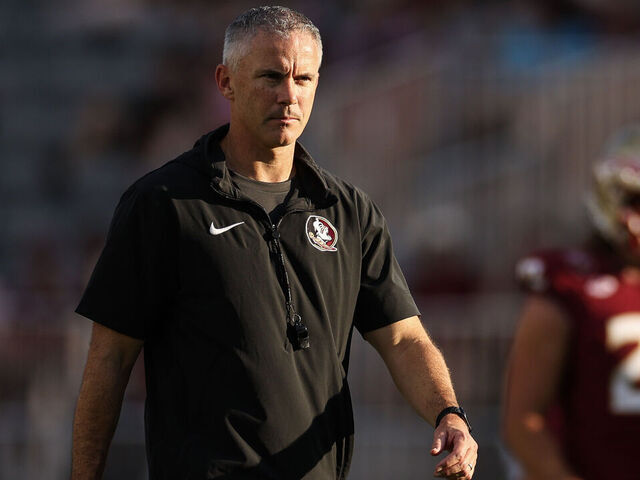Florida State is at a critical crossroads under head coach Mike Norvell, a moment that starkly highlights the volatile, transactional nature of modern college football.
The program finds itself caught in an agonizing dilemma: unable to fire Norvell due to his bloated, long-term contract, but also unsure of how to move forward with him in charge. As Norvell put it last week, “We can’t get caught up in what happened yesterday. Other than to learn from it.”
This financial quagmire is a reality facing several major programs, including Florida, Auburn, Oklahoma, Wisconsin, and Southern California — and even Michigan, less than a year removed from a national title. The hard truth is that lucrative, guaranteed coaching contracts don’t always translate into on-field success.
Nowhere is this more evident than at Florida State, where Norvell’s embrace of the transfer portal has both reaped rewards and led to crushing failures. The program’s fortunes are now intricately tied to this new era of player acquisition — a high-risk, high-reward gamble that has worked wonders at times, but also left the Seminoles in shambles when it faltered.
Just a year ago, Florida State was riding a 19-game winning streak and on the brink of a College Football Playoff berth, only to be left out. In response, as speculation swirled about Norvell potentially leaving for Alabama after Nick Saban’s retirement, Florida State made the decision to secure him with a massive $64 million buyout to keep him at the helm. Fast forward to the present, and that hefty investment now feels like an albatross, dragging the program down as it grapples with its worst season since 1974.
Florida State’s struggles are a glaring example of the dangers that come with over-relying on the transfer portal. Norvell’s early success in the portal led him to believe he could build a program more quickly by plugging holes with immediate-impact transfers, rather than through traditional high school recruiting and player development. But now, with Florida State languishing through a 1-9 stretch and Norvell firing his offensive coordinator, defensive coordinator, and wide receivers coach, it’s clear that strategy has backfired.
The most significant misstep came when Norvell chose quarterback D.J. Uiagalelei from the transfer portal to replace the injured Jordan Travis. Uiagalelei, once a highly touted prospect, has proven to be a serviceable game manager at best, leaving the Seminoles without the dynamic playmaker they desperately needed. And Uiagalelei’s struggles are just one part of a broader issue: Florida State has missed more often than hit in the portal this season, with several players failing to live up to expectations.
Norvell’s belief that he could “fix” any player in the portal, combined with the pressure from the administration to win now, created an echo chamber that led to poor decisions. It’s a classic example of how the allure of the portal can obscure the inherent risks of trying to quickly build a program. Now, Florida State finds itself with $8.5 million in buyouts for fired assistant coaches, yet it’s still cheaper than admitting a $64 million mistake on the head coach.
Looking back, the downfall began after Jordan Travis’s devastating injury last season. What followed was a cascade of misfortunes: the end of a historic winning streak, a crushing loss to Georgia in the Orange Bowl, and a series of strategic miscalculations that have snowballed into the current disaster. Norvell received a lucrative contract extension, but the Seminoles’ on-field performance has since plummeted. The once-promising future has now been marred by poor decisions and an inability to recover.
In retrospect, the warning signs were there — most glaringly during the Orange Bowl loss to Georgia, where many of the key players who had transferred to Florida State were among those who opted out. Those very players, who were seen as crucial pieces of the program, are now a symbol of the fragility of building a team on the backs of transfer portal players. The lesson is clear: succeed in the portal, and your program soars. Fail, and you risk disaster.
The question now is whether Florida State, and other programs caught in the same trap, can learn from these mistakes. The teaching moment has arrived. Who will heed the warning?
